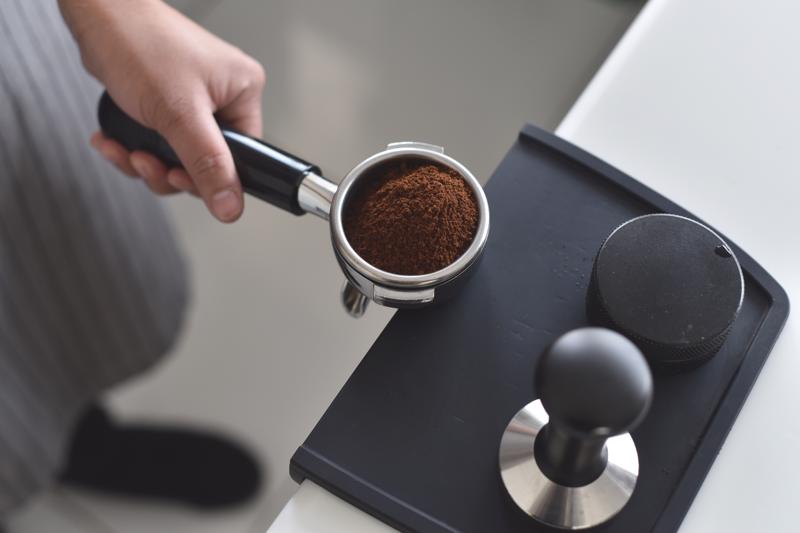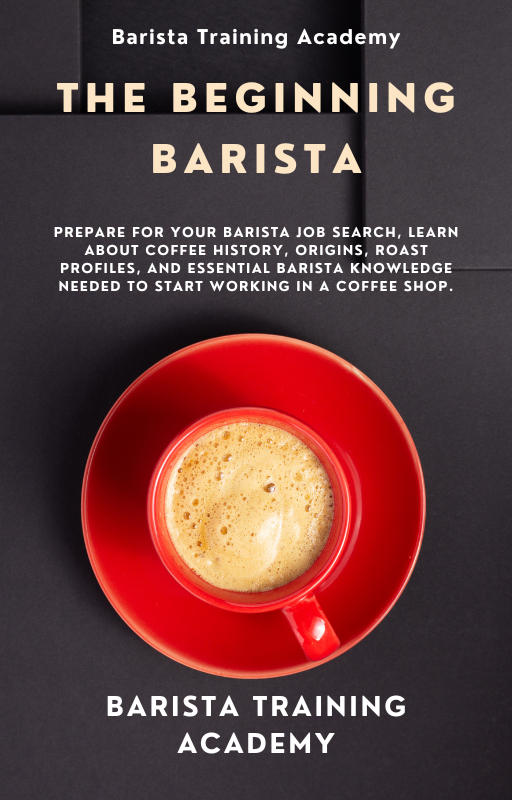Essential Barista Tools and Accessories Needed
Like any professional, a barista needs specific tools to craft delicious coffee creations.
For brewing coffee and pulling espresso shots, you'll have your standard coffee shop workhorses: the espresso machine, pour-over brewers, French press, and AeroPress devices.
As a well-trained barista, you will have to adapt to the coffee equipment you'll have to work with and know how to utilize every option to serve your customers the best coffee possible. It's essential to build the best coffee drinks during the morning rush. If you have no barista experience, you will want to invest in a barista training course for barista fundamentals.
During your barista work, you'll also need some essential barista tools that go beyond your espresso machine or pour-over devices. Whether you work in a coffee shop, drive-thru coffee stand, coffee shop bookstore, or mobile coffee truck, you'll need to be familiar with essential barista tools and accessories.
This post will discuss the tools you will need to do your job as a barista.
Essential Barista Tools
Electric Kettle
An electric kettle is used to boil water for pour-over coffee and tea. Although most kettles are electric, they can be heated on the stove too. An electric kettle has a small thin pipe that allows you to pour just as much water as you need for your beverage. Most electric kettles have a thermometer with 1-degree precision and an LCD screen. It's essential to reach the optimum coffee or tea taste with the correct water temperature. Some electric kettles can be nice and sleek; they'll be a great addition to your brew bar.
Scale
To consistently pour incredible drinks, you'll need to be consistent drink after drink. This is where your scale comes in.
If you're lucky, you might have two types of scales: an espresso scale and a pour-over scale. Of course, it would be best if you had an espresso scale to measure the perfect espresso dose. Most espresso scales are portable and have an accuracy of 0.1 grams. Larger scales can be used for pour-overs and extraction measurements. You can also weigh the beans and ground coffee.
Thermometer
This barista tool is used to measure the temperature of the milk. Thermometers ensure that you don't over steam the milk and burn your customers. It can come with a clip to be attached to a pitcher when steaming and frothing milk.
Timer (for extraction time)
When pulling the best espresso shots and building delicious espresso drinks, timing is everything. The coffee extraction time is 25-30 seconds. Any deviation from it may lead to a bad-tasting espresso shot. So instead of counting in your head, it's better to rely on an electronic timer. Some modern scales and espresso machines are equipped with a timer.
Portafilter
The portafilter is a part of an espresso machine that looks like a spoon and holds the coffee grounds. It firmly locks in the espresso machine group head so that hot water can run through it without a problem and extract all the goodies. A portafilter consists of a filter basket, a handle, and one or two spouts – or no spouts at all (then it's called a bottomless portafilter).
Coffee Grinder
Your coffee grinder is an essential barista tool that allows you to grind fresh coffee before brewing. Electric coffee grinders can quickly grind just as much coffee as you need: from a single espresso shot to large doses for batch brewing. Such grinders are most typical in s coffee shop setting. They have conical burrs that can be adjusted to get the right size of your coffee grounds. In addition, many grinders have an auto-dosing system. However, you might want to change your pre-set grinding settings several times during the day.
Tamper
A typical tamper looks like a doorknob with a steel base and a handle. It is used to tamp coffee in a portafilter. Some modern-day palm tampers look like a hockey puck. It's used to compress the coffee grounds. Its length can be adjusted to the dosage for one or two shots.
Long mixing spoon
Sometimes building espresso drinks comes with doing the smallest things. Having the right barista tools will help. A long mixing spoon is used to stir drinks like mocha, hot cocoa, hot chocolate. It can also measure dry and liquid ingredients such as alcohol, cocoa powder, various toppings.
Frothing pitcher
This is one of the essential barista tools, which will be used daily to prepare such drinks as cappuccino, latte, mocha, flat white, etc. – anything that includes milk. The pitcher is stainless steel and looks like a longer cup with a handle and a pouring spout. Often you can see markings are on both inside walls of a pitcher. Pitchers come in different sizes depending on the amount of milk you plan to froth.
Utility brush
You might come across several brushes at your barista workstation. For example, a small pointed brush is used for cleaning the group head gasket in your espresso machine—a long thin brush is used to clean portafilter spouts. Larger brushes are used to clean coffee grinder parts.
Tamping mat
This is often a silicone or rubber mat to protect your work surfaces. It's usually placed on the edge of a table where you rest your portafilter to tamp the coffee.
Knock box
What would a barista do without a knock box? A knock box is placed near the espresso machine and holds used or spent coffee. It usually has a knock bar to facilitate knocking out wet coffee grounds by gently tapping down on the portafilter.
Microfiber cloth
Keeping your workstation clean is arguably the highest priority. You might want to have several microfiber cloths to maintain the espresso machine's cleanliness and surroundings. Unlike regular fabrics, they collect more dust, dirt, and liquid. You want to have at least three separate cloths to clean or purge the steam wand, clean a dirty portafiler, and other purposes.
Urnex Cafiza Cleaner
This cleaning powder gently cleans and separates the coffee from the metal. You will use it every time for backflushing your espresso machine and soaking filters and portafilters.
Barista Tool Maintenance
Barista tools are usually costly. Proper maintenance of your barista tools is essential to make them last longer and avoid breakdowns. Having the proper and clean tools will help you serve the best possible coffee.
Not cleaning your espresso machine will lead to lousy tasting coffee shots, block the water pipes, and contaminate the milk steamer. A dirty grinder will make your coffee bitter and can eventually get blunt and break. Knowing how to handle and clean them will allow you and your customers to enjoy great coffee every time.
Keeping your machine and tools clean is essential when working in the food industry. Most surroundings, especially milk, are perfect conditions for bacteria, viruses, and parasites to grow. It is crucial to clean your espresso machine and other tools that come in close contact with food – like pitchers, thermometers, cups, and plates. Changing your towels and work cloths is also vital to prevent any foodborne illnesses like
Summary:
Depending on your café, you may or may not encounter each of these tools mentioned above. However, you should be aware that they exist and why they are needed. Each tool serves its purpose, and your job as a barista to know how to use every piece of the coffee equipment.
When you start your first job as a barista, you will indeed have a training course provided by your employee. This way, you will have a chance to get acquainted with the tools you'll be working with at the café. For example, although all coffee machines and grinders work similarly, they might significantly differ in different cafes.
If you don't understand how to use current or new tools, approach your manager and ask your specific questions. On the other hand, if you learned about a new tool that might come in handy and alleviate your work, don't be shy to ask your manager for it.

Essential Barista Tools and Information
Additional Questions:
How can I be a faster barista without any experience?
Learning fast means learning online before you start working. This way, when you get hired at a new coffee shop startup, you will already know the barista terminology and slang and everything about coffee origins and profiles. The fastest way to learn how to be a barista with no experience is to take an online course that familiarizes you with all coffee equipment and how to operate and maintain it, along with all barista job requirements and duties. In addition, with an online training course, you will find it helpful to write a professional barista resume and cover letter.
By starting early and taking an affordable online course, you will learn much faster when you have your first barista training at a coffee shop.
What skills do you need to be a barista?
More and more people lately are choosing a barista career. No wonder there's a high demand for good baristas and some great benefits to this particular job.
First and foremost, a barista job requires customer service skills because you will be communicating with customers daily. Your employer expects you to be friendly, polite, passionately enthusiastic about coffee, reliable, and ambitious. It would help if you also looked neat and clean because you'll be working in the food industry.
Besides the soft skills mentioned above, you will need to acquire skills like grinding coffee, pulling correct espresso shots, and steaming your milk correctly to create great cappuccinos and lattes.
How can I improve my barista income?
One of the most excellent perks of a barista job is a potentially good salary. Baristas usually get a minimum wage in their state plus bonuses and tips. If you want to increase your barista tips, you should consider a few tricks. First, you should always maintain a polite and kind attitude and subtly teach your customers about coffee. People value your knowledge and enthusiasm. What they don't like is arrogant and rude baristas.
You also want to maintain a clean and healthy environment so that your customers feel safe and welcomed. This also includes your neat and clean outlook. Remembering your regulars' drink will be a great idea because repeat customers tend to tip more. Giving smaller change, decorating a tip jar, or simply taking pride in what you are doing will surely improve your barista income.

Brought to you by Barista Training Academy, “The Beginning Barista,” Your Ultimate Prep Guide to Getting Your First Job as a Barista” is an ultimate resource available online and affordable for anybody looking to start a career in the coffee industry. For more information, visit our blog.
